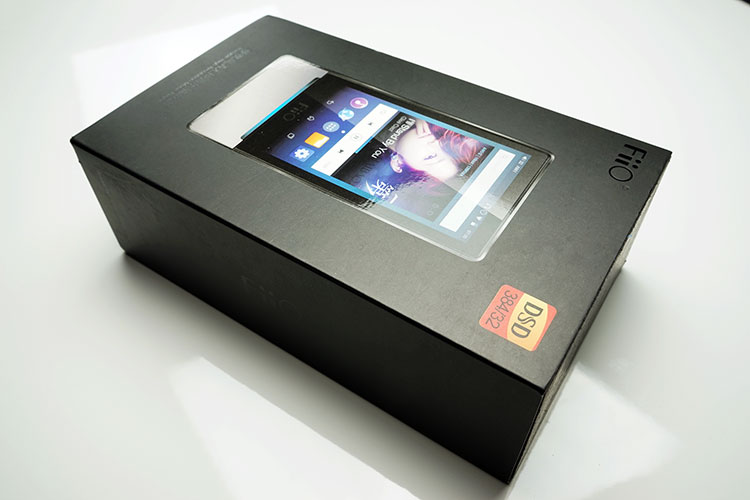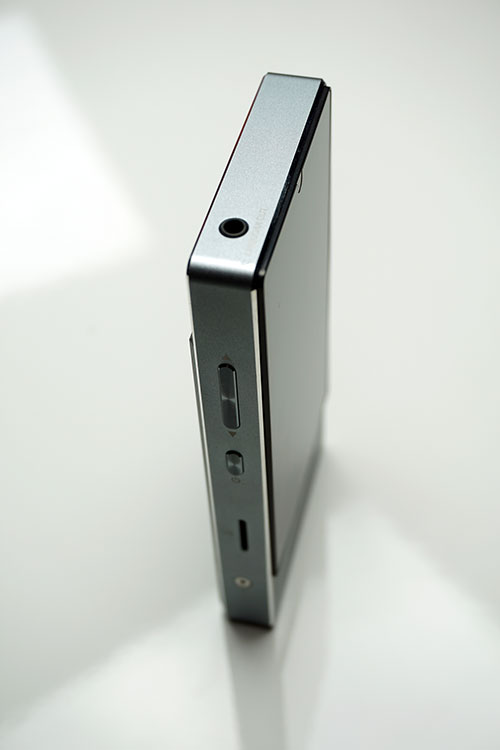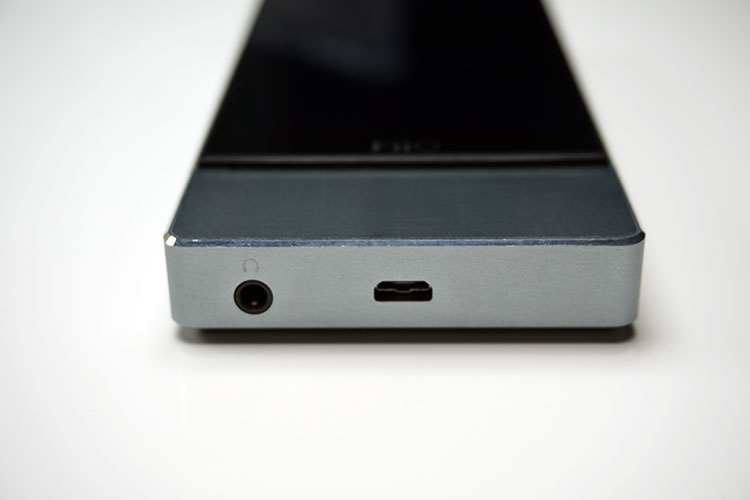Disclaimer: The FiiO E10K TC sent to us is a sample in exchange for our honest opinion in this review. We thank FiiO for this opportunity.
To learn more about FiiO reviews on Headfonics you can click here.
Note, this 2-page review follows our new scoring guidelines for 2021 which you can read up on here.
Never did I think I would be tagging a FiiO product in the $500-$1000 category, but here it is, the much-hyped and now very real FiiO X7 flagship DAP.
There are 450 pages on Head-fi alone covering the X7 and the darn thing was not even out in the market when I checked that page count. FiiO fans are truly hardcore, almost Jobsian in their devotion, but can this “grow with me” marketing strategy that began at sub-$50 a few years back carry FiiO and its fans through to a successful $649 DAP?
That is too early to decide but I am telling you right now FiiO do not hang about and for that reason, this is what we would call a Part One review.
The reason for that is that the X7 DAP is not only their most ambitious and expensive project to date it is also an eco-system of mini-projects due to the amp module system they are developing in parallel to the main player and the software.
We will be visiting the X7 a few times in the coming months because of that amp module system. It could well be FiiO’s masterstroke in product life cycles and perhaps for once, I won’t be seeing a Gen 2 X7 in 12 months’ time with just minor tweaks or a new DAC chip.
The stock amp module they are currently shipping the X7 out with is their IEM module which makes sense since the vast majority of users and FiiO fans will likely stick portable cans or IEM’s into this on the go.
Why Did It Happen?
FiiO decided to build the “ultimate DAP” based partly on user feedback from notable forums and general customer experience of previous DAP’s and another competitor DAP’s What proceeded was a very long list of demands from the community on everything from the DAC chip to the OS, amping, formats and general tonal quality.
Add all that up and it was pretty clear that getting just a fraction of all that in s single workable device at a price not too un-FiiO was going to be a challenge.
I heard the concept of the X7 floating around I think for nearly 2 years now from a wink in FiiO’s eye right up to the first eye-catching designs. If anything the X7 is as much a product of FiiO’s experience as it is the fruition of many a users dream DAP.
Naturally, people will point to the AK240 or AK380 as the ultimate DAP based purely on price and the reviews to date. I get that desire, I hear that cacophony, but I simply do not agree that the placebo is not playing a role here slightly and by golly, if I am spending over $3k then doubts can’t creep in.
Creating a DAP at $649 incorporating what people actually said they want is not too far off crowdsourcing if you ask me and in truth makes the whole project a lot more desirable. For those that spoke and said what they wanted, and got it, there can be no greater sense of ownership.
And the beat goes on because right now the discussion has moved onto amp module card development with full community involvement and discussion which I really hope comes out with some interesting and varied units beyond the initial IEM card.
What Do You Get?
I have been a bit critical of FiiO before on their packaging being a bit “samey” for a lot of the products. The harmony and standardization spoke wonders on their OCD levels in branding but the humility was sometimes a little too much at times and I felt they missed the opportunity to scream out how good their products are beyond a few minor details at the back. Not so with the FiiO X7.
The front shows the unit, marketing doesn’t come any better than that, but the top is more like what I wanted FiiO to do and that starts pitching the USP from the retail shelf and not when it’s in your hand. DSD 384&32? Thank you very much and here is my money, but wait, what about the back?
Yup it has all the technical specifications there also. I would say though a white FiiO logo would be more striking than the black one they are currently using on the front. I also still think the likes of Creative are light years ahead in screaming unique selling points on their packaging but the X7 is a step in the right direction for me.
Inside and beyond the internal boxing is a bit more typical of the usual FiiO styling with a top tray holding the unit securely and all the accessories and cards underneath as well as a single sheet user guide which I strongly suggest you read as some of the navigational cues on the physical buttons of the X7 are not immediately obvious. I
t is also a vastly more complex device over the X5 series so there is a heck of a lot more going on than before.
There And Not There
What you get is good and what you don’t get is surprising. You get the now standard USB charging cable and digital out to coaxial short adapter that you got before with the X5ii.
You also get a pre-fitted screen protector as well as two spares, your FiiO warranty card, and finally a small T5 screwdriver. The small T5 is for the purpose of allowing you to change the amp modules attached to the bottom of the X7 should you have more than one module in the future.
What you do not get is any sort of silicone, leather, or cloth pouch to carry around your brand new shiny $649 DAP. That’s the surprising part, it really needed to be there and right now I am borrowing the E18 case as it fits and only just but it is a poor man’s solution. I hear they will soon launch a range of cases and that is welcome news but for now, you are on your own.
The Unit
Without a shadow of a doubt, it is the best-looking device of any type to come out of FiiO’s doors since they began making things I like for not so many pennies.
Of course, I have to balance that with the fact it is $649 and it should look rather excellent but there are some higher-priced ugly units out there and I personally think FiiO has done a marvelous job with the X7 aesthetics and form factor.
Inspirations & Phones
I also had a little thought to myself that it passes a rather complimentary nod to the old Zune HD from about 8 years ago. I am sure it’s just a coincidence but it does prove no matter how original you are in design format chances are it’s been done before in one guise or another already.
That being said the X7 is leagues ahead of the iBasso DX80 in build quality, on par with Astell & Kern’s AK100/120ii and smoother to the eye than the L&P Pro range.
It also is a complete break from the previous X1/3/5 series of hardware scroll-based DAPs. We now from iPod inspired box and wheel-shaped with small non-touch-based screens and a proprietary UI to a smartphone or iPhone type form factor with a long touchscreen sporting Android 4.
Yup FiiO has finally got to implementing Android on their DAPs which if anyone remembers was the original intention way back in 2011 before the X3 hit the rocks during the first conceptual design cycle.
The Screen
From what FiiO has told me the journey to selecting a 4″ 800 x 480 multi-touch capacitive screen was not an easy process, smaller ones are harder to find and bigger ones more expensive to produce.
Personally, for a DAP with the potential for more media apps than just audio (Android), I actually think the screen size is not too bad and keeps the unit from getting a bit too big and wieldy for everyday use.
It is already larger than the original X5 and current X5ii but in the context of say the new AK range, Calyx M, and the newest from Onyx it is a reasonable 130 x 64 x 17mm in overall dimension. To put that into everyday user context the old 4″ screen iPhone 5 measured in at 123.8 x 58.6 x 7.6 mm so quite similar except for depth at 17mm.
On an audiophile level, it compares favorably with the smaller 3.3″ AK120ii at 55 mm x 118 mm 14.9 mm and a bit smaller than the taller but slightly slimmer 4.5″ Calyx M at 135.50 x 70 x 14.80mm.
The one slight concern is the raised screen which doesn’t run flush with the casing making it possibly a weak spot if ever dropped. Mind you without a case there may be a great deal more to worry about than just simply the screen but that’s usually the first thing to die. Those with touchscreen phones these days are used to flush front panels so they might find the edges a bit awkward.
The bezel this time is thankfully minimal unlike the X5ii or the X5 which was rather large for a rather small LCD panel. It leaves just enough room for the all-important FiiO logo at the bottom.
Those coming from smartphone Android may find the lack of integrated navigation and home touch-sensitive buttons in the bezel area a bit disappointing as it reduces the screen real estate a little but it is not something I am overly bothered about.
Casing
The casing is machined out of a very sturdy 6061 aluminum material with a very nice brushed finish on the top side and smooth sides and backs. It’s not completely flush at the back though.
FiiO designers had considered keeping the dimensions at the back rather more uniform but in the end, felt the design would just look a bit boring.
I agree actually, it is quite a nice little touch and blends in nicely with the screw-in amp cards making the unit look more singular or monolithic rather than actually two different disjointed physical objects screwed together (unit and amp module).
The beveled curved edges do give the X7 a nice smooth feel so there is nothing angular or sharp to the touch when in your hand.
Front & back
Unlike previous FiiO DAPs and iBasso’s new DX80, there is no front panel hardware button array. This is purely a window for the 4″ touchscreen with only the FiiO logo breaking the clean lines from top to bottom.
The very bottom 2cm or so the metal finish is actually the amp module rather than the unit which can be detached using the T5 on small screws on the left and right panel. IN time these amp cards will change, and therefore it is likely the look and feel of the X7 will change with it depending on the module you attach.
Everything from color, to weight and form factor, could change beyond this review and that is something we will likely revisit in the New Year when those cards start coming out.
The back is equally moribund of anything other than metal save but a few decals stating that it is an X7 from FiiO. Note however in the bottom right of the module itself it does state what the module actually is; “IEM Type M1”. I suspect that might come in handy if any modules come out that look a bit similar.
Right underneath the screen though there is a rather eye-catching blue LED strip that lights up when powered on. FiiO love that blue color to represent power on their amps and DAPs’s so the blue strip is a rather elaborate continuation of that theme.
Since FW1.3 FiiO has implemented a fixed pulsar light on/off setting customization and lower power reminder for the LED which is useful.
The sides
Both sides have extremely similar setups and there is a reason behind why FiiO introduced symmetrical button arrays for their side panels. All of these buttons can be reassigned differing functions depending on your preference and this is ideally suited to switching between left-handed play and right-handed play.
The original intent was to have a back screen LCD display with an auto-detect function that remapped the keys automatically depending on the orientation of the player. The rear screen went out the “window” at some point during the development process and now you have a custom function in the settings menu to change the functionalities of the buttons.
The stock layout has the volume and power control to the left side and the song selection, play, and pause to the right side. The decals on the physical sides are also defaulting to the same layout.
Personally, I can go either way with regards to the layout, it is just a question of conditioning and what you are used to. DAPs these days have no uniform layout but FiiO has been putting power and volume on the left side for a while now so FiiO fans should be used to this layout.
Further down on the left side you have a single microSD slot which is a change from the dual microSD on the X5 and X5ii. In return, you get 32GB of onboard memory with the X7 and zilch with the X5 and X5ii so there is a trade-off.
Personally, I can cope with a single slot given the rapidly dropping prices of memory cards these days but those used to having double I am afraid you are out of luck.
Top & bottom
The top and bottom this time on the X7 is a much more serene affair with a lot less going on than the previous X DAPs. The top has a single jack port for a line out or a Line/Coaxial out but instead of the headphone jack being on the right side of the top panel such as the X5ii and X3ii,
FiiO instead has opted to place the headphone out jack at the bottom panel on the left-hand side much like the DX80 and DX90 from iBasso. I am not hugely into bottom jack outs, I prefer top, feels more traditional but others prefer it as it keeps the cable out of the way of the screen so I can live it.
The final port on the bottom panel is the USB input which allows the FiiO to double up as a DAC with your PC or MAC, charge the unit, as well as perform some OTG functionality.
Functionality
The X7 is the first offering by FiiO that uses an Android OS and as such the functionality of the player has gone through the roof compared to the X5ii and X3ii.
Not only do we have the potential for OTG and DAC functionality (firmware dependent) but the X7 now also offers Bluetooth and WiFi and if you can find a way to get around the white list (more about that later) via side-loading you can have a lot more fun with it.
Sadly, the BT module is not aptX capable which puts a dampener on things when I want to lock horns with my Pendulumic Stance S1+ headphone but generally speaking the WiFi is what I am most excited about if Spotify gets on the FiiO white list along with Deezer and Tidal.
Wireless hi-res streaming right now for me is via the Celsus Companion One and its a great DAC unit but to be able to go wireless on the move for Spotify with a better setup than my smartphone and not have to bring a secondary high-end DAC is very alluring.
DAC
This is perhaps the main star of the X7 as the DAC being deployed here is a full ES9018S 8-channel (bridged 4 a side) chip of the type usually deployed in desktop units like the Oppo HA-1.
That’s obscene and over the top for a DAP but I love it. It’s part brave, part opulent and all audiophile. It’s like stuffing a v6 turbo into a small sedan and not giving a hoot (hello Clio V6!).
Well of course I doubt FiiO ever just did this on a whim, 2 years of R&D suggest otherwise, but where most are sticking with chips known for their mobility and high efficiency on power management, FiiO upped the game and went no compromise.
Not only that but they have designed the implementation to bypass Android draconian bit rate signal from 16/44 to offer up to DSD128 decoding capabilities and 384kHz/24bit depth.
That is impressive indeed though DSD256 is sadly missing from the spec sheet which would have been the icing on the cake but not a deal-breaker by any means given the sparsity of quality DSD256 tracks on the market and their huge file sizes to boot.
One suspects also the battery life for DSD256 would not have been that great either even though the ESS9018S can decode that format in other incarnations. Other formats supported by the X7 include WAV, IFF, FLAC, WMA, MP3, AAC, and OGG, with native DSD64/128 and 352.8 K DXD.
Amping
This is a to be continued aspect of the review because as you probably picked up by now the amping section of the FiiO X7 is rather a big selling point given that it is a modular system.
The stock unit is an amp module designed for efficiency and sensitivity being primarily aimed at IEM and low impedance portable headphones. Right now James of FiiO has outlined the following new modules in more detail on Head-fi:
-
Standard (IEM) module: suitable for driving most IEMs, earbuds, portable on-ear earphones and some efficient full-size headphones.
-
Medium power module: utilizing the renowned MUSE02 op-amp for higher output power and wider application.
-
High power module: Use of the MUSE02 op-amp planned for power amplification of full size headphones.
-
Balanced output module: having 4-pin Kobiconn and 2.5mm balanced output ports, this will be the amp to have for various headphones / earphones on the market with balanced cables.
But even as he wrote that he does admit that there are so many possible combinations for amping the X7 that it is impossible to meet all the expectations and I agree with that.
However, I think options 3 and 4 above could be merged to have a 2.5mm TRSS and single 3.5mm power/balanced module and instead introduce something with a bit more effect just to liven up the development path.
Mention of vocal orientated and tube orientated amp modules sounds very promising though some might also argue the use of EQ could have the same effect.
The openness to 3rd party modules being sold though does suggest the whole module system can take a life of its own and that is something that is very welcome indeed. If the price is right for the modules I could see these being snapped up quickly.
Battery
The battery in the FiiO X7 is a 3500mAh lithium battery rated at up to 10 hours of continuous use. Now that is one heck of a tricky one to assess given all the potential variable playback scenarios you can have with the X7.
Pure Music mode will give you the best chance of hitting 9-10 hours but once you up the bit-rate decoding and switch to Android UI, throw in some WiFi, streaming, and background tasks that playback rating drops pretty fast to around 5-7 hours.
Remember that is 10 hours with the LED screen off so be prepared for shorter playback times overall. Note also the IEM module might just possibly be the efficient one and modules such as the balanced module could end up draining the battery dry a lot quicker.
Of course, I could be wrong, future firmware upgrades could prolong the life as FiiO managed to achieve with their firmware on the X5 and X3 and modules could get more advanced so I will sit on the fence on this one.
Click on page 2 below for software impressions






